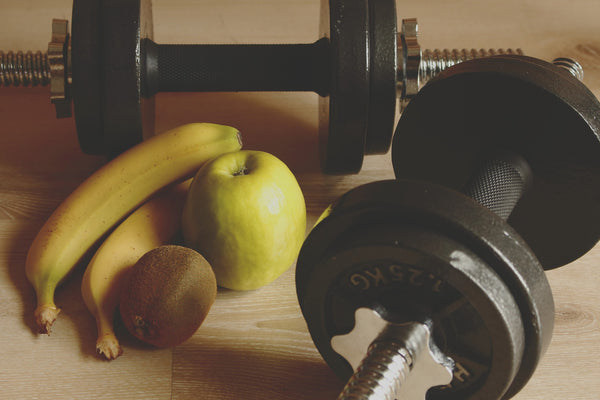Many hear the word “weightlifting” and immediately think of building muscle mass or bulking up. However, weightlifting is so much more than just putting on mass and bulking up with excessive amounts of food. Weightlifting had often been thought of as an intimidating form of exercise, scaring many people away. But currently, weightlifting is beginning to make more sense to the average person looking to change their lifestyle. We have outlined some of the most important aspects of a weightlifting program to give you a more comprehensive look at why many are integrating weightlifting into their routines every day.
These are 5 weightlifting benefits designed to give you a better understanding of weightlifting:
What Are the Benefits of Weightlifting?

Increased Strength
Increased strength is the most well-known of all weightlifting benefits. It allows you to live your daily life independently.
When your strength begins to increase, your body fat begins to decrease, and you begin to maintain more lean body mass (this is a HUGE part of weightlifting).
You will also notice an increase in your metabolism, which will allow you to maintain a healthy weight and a dramatic change in your energy levels (which we all need).
Improved Bone Health
One of the most overlooked benefits of weight training is bone support. Weightlifting doesn't only train your muscles - it also trains your bones. Just like a muscle, bones are living tissue. With steady weight lifting, new bone tissue forms.
An example of this is when you perform a leg curl. Your muscles tug on your leg’s bone. The cells within those bones react by creating new bone cells. Bone health, along with muscle strength, contributes to better overall health.
Prevent Injury
As we age, we are more likely to have some type of injury that may require a long recovery. Much of this is due to weak joints and muscles. Weightlifting helps you strengthen your muscles that surround your joints, preventing current and future injuries. The stronger your muscles and tendons are, the easier it is for your body to be in proper alignment, which then protects the body under the impact.
Weightlifting Heart Benefits
Typical cardio exercises are not the only exercises that are considered good for your cardiovascular system. Strength training can improve your heart health too. Studies have shown that with moderate-intensity strength training, people with high blood pressure saw immediate lowered blood pressure.
Another outlook on heart health in regard to weightlifting is the burning of fat tissue around the heart. Of course, this happens with “cardio” as well, but the strength from weightlifting is so much greater than what you can gain on a treadmill. Increasing your body’s strength leads to leaner body tissue and higher metabolism function.

Feel Accomplished
This is perhaps the most important of all mental benefits of weightlifting. Weightlifting does not just empower men & women wanting to get big. Lifting heavier weights and building strength comes with a big self-esteem boost. When you strengthen your body, it will not only show in your physical appearance, but it will also impact your mental state.
People often want to do something for themselves. Weightlifting is solely for you and no one else. Your body WILL change, and so will your mind. Start with small weekly and monthly goals to get to your ultimate goal.
How to Start Weightlifting
The first thing to consider when starting a weightlifting routine is time and space. Make sure you set aside time for weight-lifting, anywhere from 30 - 60 minutes, depending on your goals. It’s important to be able to commit to this time and know it will always be kept available on your schedule. You don’t want to abandon a new routine because the time and place you picked are not always available, which brings us to another important factor - location.
Whether you choose to work out at home or the gym, make sure your location has all the equipment you need for your goals and is a place you feel comfortable. If you are completely new to weightlifting, start at a local gym close to your home—no need to join that trendy, expensive gym downtown if you are just starting out. If you pick a place close to you and where you are comfortable, you are more likely to look forward to your workouts every day.
How to Develop a Weightlifting Routine
If you don’t know where to start, the best option is to consult with a professional trainer. While there are thousands of videos and resources online, a trainer can help you develop a more personalized routine for your specific goals. If you have a gym subscription, you may have access to one free session or consultation with a personal trainer. If working out at home, consult with a local trainer in your area. In addition to an exercise routine, trainers can also recommend daily essential supplements and offer crucial nutritional advice. Most importantly, make sure whoever you choose is qualified to give you the information and guidance you need.
The information being presented in this blog is intended to be used as educational or resource information only. It is not intended to be a substitute for medical advice from your healthcare provider. This content should not be used for the diagnosis or treatment of any medical condition. If you have any questions or concerns about your health, please contact your healthcare provider. You should call 911 for all medical emergencies. Revive MD is not liable for any advice or information provided on this blog, which advice or information is provided on an “as-is” basis, and assumes no liability for diagnosis, treatment, decisions, or actions made in reliance upon any advice or information contained on this blog. No warranties, express or implied, are made on the information that is provided.


